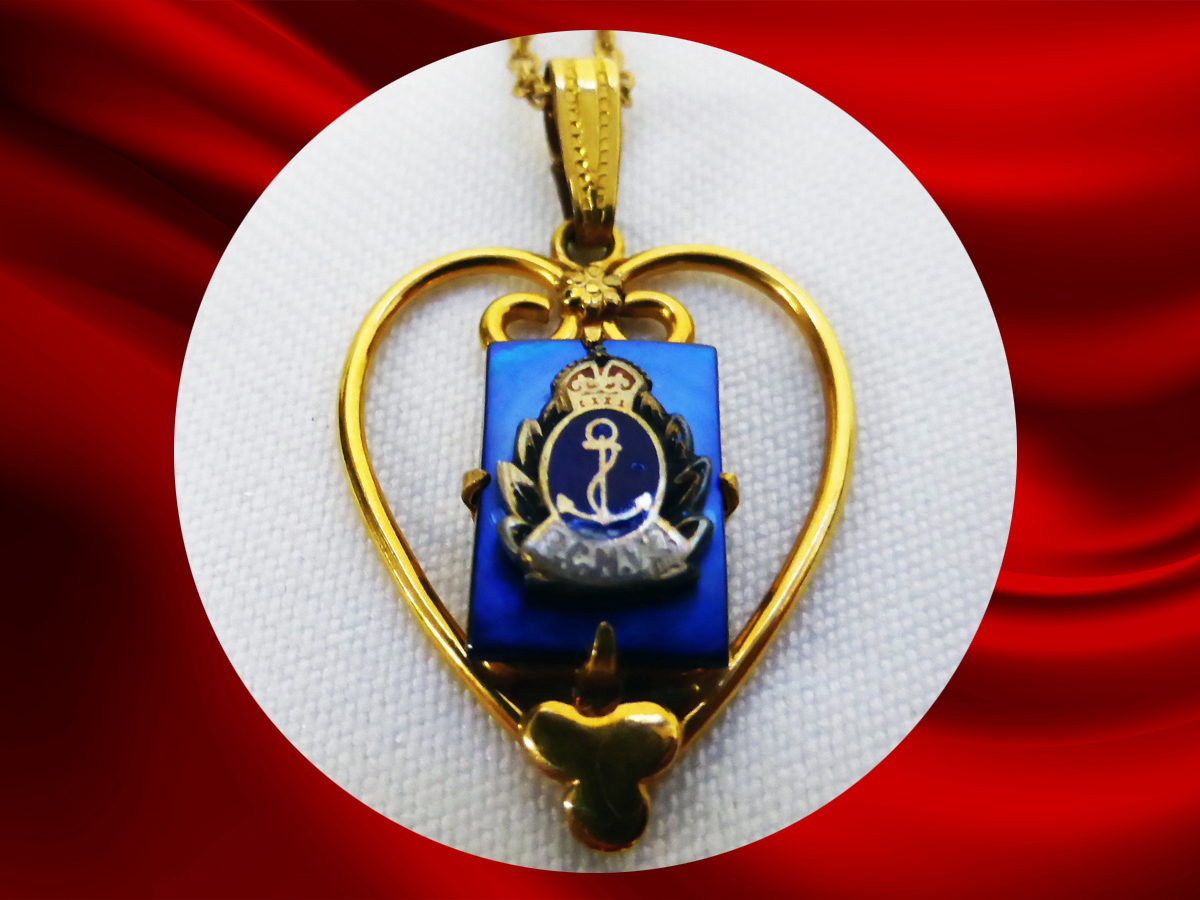The origin and meaning of sweetheart jewellery
By Lookout Production on Feb 14, 2023 with Comments 0

Detail of RCNVR pendant and necklace from the collection of the CFB Esquimalt Naval and Military Museum.
Clare Sharpe, CFB Esquimalt Naval & Military Museum — There are few more potent symbols of wartime love, separation and affection than so-called ‘sweetheart jewellery’.
These keepsakes reminded the wearer of a relative or sweetheart who served in the military. Such tokens of love and like, in the form of personal jewellery and adornments, were made to be given as gifts to family members and romantic partners. The givers were often men serving in the military who wanted to offer a small but significant present to a woman they loved or admired. The hope was that the gift would remind the recipient of them and their role in the armed forces.
Women such as those serving in the Women’s Royal Canadian Naval Service (WRCNS) also purchased and gifted sweetheart jewellery to those they cherished and admired. The giving and wearing of sweetheart jewellery symbolized respect for service and personal affection.
Sweetheart jewellery took the form of pins, brooches, necklaces and pendants, rings, bracelets, watches and sometimes earrings. Designs incorporated the badges and symbols of many military branches and reflected the donor’s allegiances. Patriotic symbols such as the iconic Canadian maple leaf were also depicted.
Jewellery of this kind was widely advertised during the Second World War; it represented a form of morale building. Another purpose was to bridge the emotional gap between loved ones separated by war.
Because these items were small, easy to buy and cheap to mail, they became trendy. The jewellery was often mass-produced and could be ordered from catalogues or bought in stores. Other items were hand-made by specialty jewellers and artisans, or created by the person giving them. Even metal military badges were sometimes incorporated into sweetheart jewellery.
Because it was wartime, the materials were typically cheap. Plastic was a reasonably new material to the market at the time and was often used. Other metals like tin were reserved for the war effort, and precious metals were under strict limits at certain stages of the war and not available for manufacture. The government placed a tax on luxury items like jewellery as part of the war effort. Despite this, such trinkets and keepsakes were a significant part of the wartime culture and stood for essential values and human bonds.
To learn more about customs and traditions like the exchange of sweetheart jewellery, visit the
CFB Esquimalt Naval and Military Museum, open Mon–Sun from 10 a.m.–3:30 p.m.
To learn more visit https://navalandmilitarymuseum.org/
Filed Under: Top Stories
About the Author:





